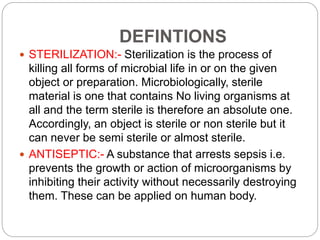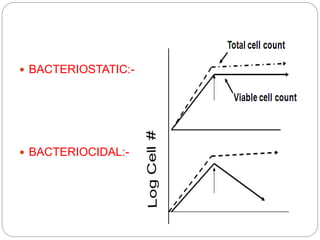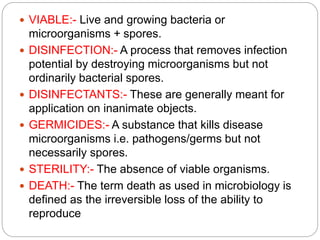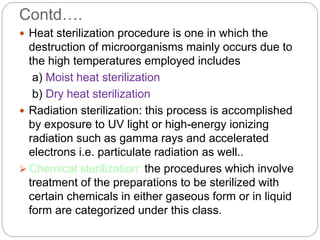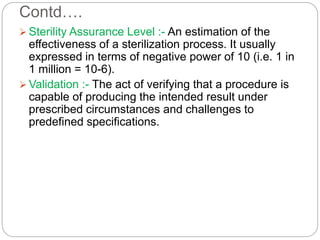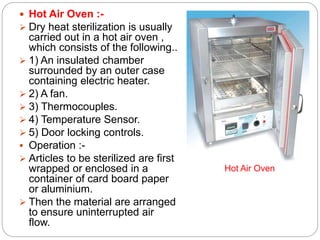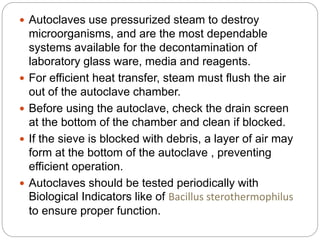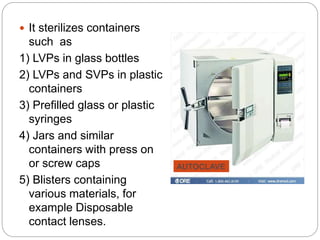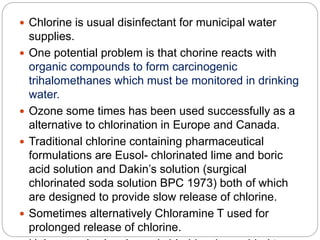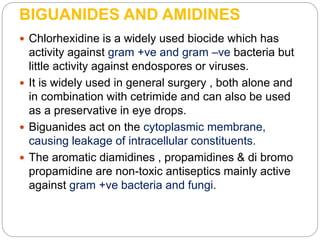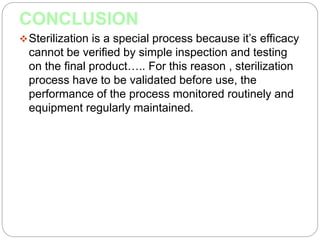This document provides an overview of sterilization including:
- Definitions of key terms like sterilization, antiseptic, bacteriostatic, and viable
- Classification of sterilization methods into terminal and non-terminal processes
- Parameters used to measure sterilization effectiveness like D-value and z-value
- Methods of controlling microorganisms through physical sterilization techniques like heat and radiation or chemical sterilization agents
- Guidance on sterilization from regulatory bodies like the FDA
- Conclusions on the importance of sterilization in various applications like pharmaceuticals and healthcare




